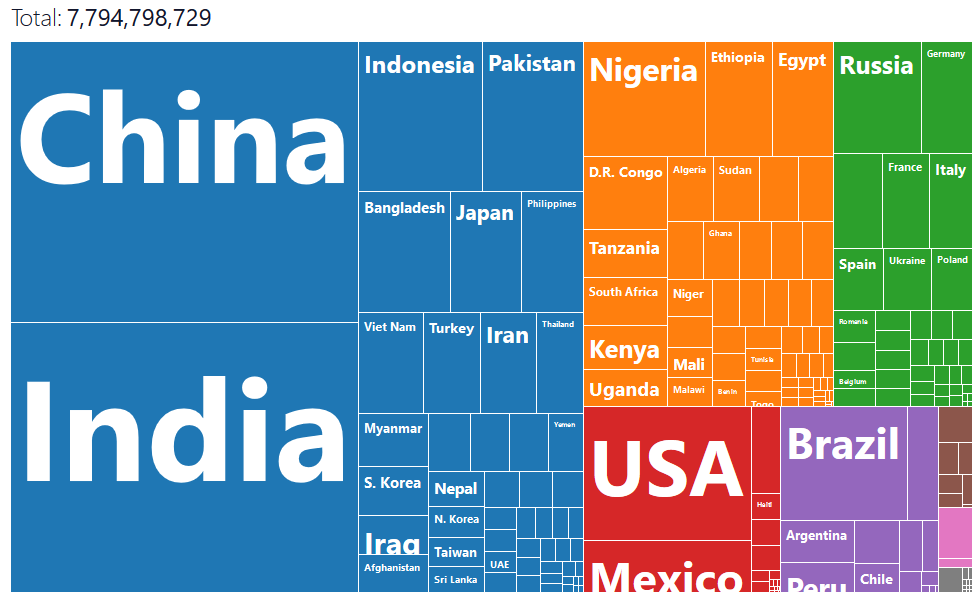2 1.2 Global Population
Laura J. Brown and R. Adam Dastrup
Global Population
Sometimes people will ask if natural disasters are getting worse. This apocalyptic concern has only increased over time because of climate change. From a geologic perspective, the data suggest that natural events are not continuing to worsen. That does not mean that issues such as climate change should be discounted; far from it. But one consistent variable is that human population growth is causing humans to be more in the way of natural events.
Demography is the study of how human populations change over time and space. It is a branch of human geography related to population geography, which examines the spatial distribution of human populations. Geographers study how populations grow and migrate, how people are distributed worldwide, and how these distributions change over time.

For most of human history, relatively few people lived on Earth, and the world population grew slowly. It’s estimated that 12,000 years ago, the world population was around 4 million and grew very slowly. About 8000 years ago, when agriculture and domestication of animals began, the world’s population started to grow. It was about 8 million people 10,000 years ago. As people continued to modify their environment and improve their living conditions with better shelter and more reliable food and water supplies, the world’s population grew faster, and people began to live longer. By the 1800s, the global population reached approximately a billion people. Around this time, during Europe’s Industrial Revolution, declining death rates due to improved nutrition and sanitation allowed more people to survive to adulthood and reproduce. This change shortened the population’s doubling times, and the global population began skyrocketing (Figure 1.6). Since the 1800s, it has increased almost 8-fold, and today (2022) is approximately 8 billion people.

Number of people living in urban areas
Throughout most of human history, people across the world have lived in small rural communities. But over the past few centuries, particularly more recently, there has been a mass migration from rural areas into urban areas. Now more than half of the world (55%) live in urban areas (Figure 9).

The population density in urban areas is higher than in rural areas. So when urban areas experience a hazardous event, even a localized one, more people are exposed, and the disaster risk is higher even when the city has a low vulnerability.

